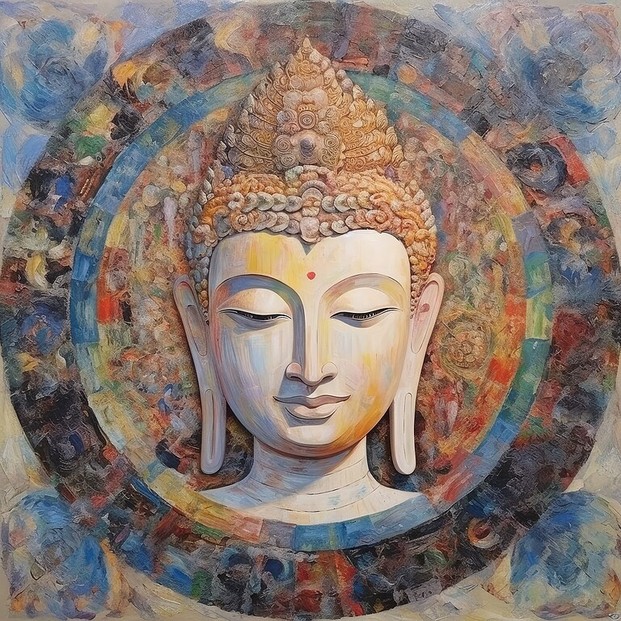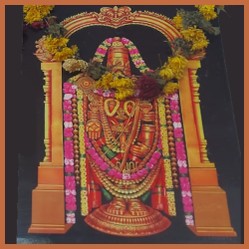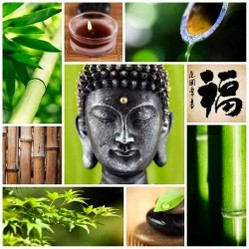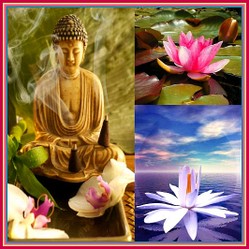My visit to Tirumala Tirupati Balaji brought about an important aspect of Indians. Millions of Hindus flock to Tirupati every year not just once, but again and again. He is also called the Lord of seven hills, Lord Tirumala or Lord Balaji. The world’s richest God is surrounded by the noble metal gold all around.
There is no doubt that Indians are religious and Hinduism is practiced widely across the country. Hindus visit temples during festivals and some go regularly. There is no compulsion on visiting temples on a regular basis and it is all based on faith and devotion.
© copyright WriterArtist 2023, All rights reserved
© Image from WriterArtist

























 Harvest Bounty of Fall Fruitson 08/03/2023
Harvest Bounty of Fall Fruitson 08/03/2023
 Is Buddhism older than Hinduism?on 06/13/2023
Is Buddhism older than Hinduism?on 06/13/2023
 The Great Wave of Kanagawa from Japanese Artist Hokusaion 06/11/2023
The Great Wave of Kanagawa from Japanese Artist Hokusaion 06/11/2023
 Renowned Historical Doting Father Figureson 05/29/2023
Renowned Historical Doting Father Figureson 05/29/2023



Do you believe in the existence of very old Buddhist shrines?
Thank you!
You've answered all my questions, such that I've enjoyed reading them as much as I treasure reading your original wizzleys.
Dear DerdriuMarriner - Thanks for your interest and many questions/points raised.
Hope I have answered them all with my understanding and knowledge of Dhamma.
Derdriumarriner- In modern India widows get to keep what belonged to their husbands. In olden days, the inheritance/ property could be usurped by the relatives, namely brothers of the deceased.
Buddhism as I know in the original Pali teachings do not celebrate deities, customs and beliefs. According to Buddha, every living being has potential to become Deva (God) and even Bramha. The living beings can even surpass these realms and become enlightened. Hindus believe Bramha is the creator of universe. Buddhism defines him just as a God of higher realm. According to Buddha, Universe/Cosmos is just there. There is no Creator.
No God came to Buddha to bestow enlightenment. Buddha encourages mankind to find the answers by themselves, he only shows them the path to enlightenment. He doesn’t grant you enlightenment, nor rewards you. He clearly tells that it has to be earned by you. He never claimed that he was God and could fulfil your wishes. He asked people to call him ‘Tathagat” - a seeker of truth.
Hinduism borrowed many Gods from Buddhism. Indra is one example. Bramha is another. There aren’t any followers of these Gods. Hindus worship many deities. Only followers of God Shiva and God Vishnu became prominent. They were known as Shaiva and Vaishnav.
Derdriumarriner - Shankaracharya and many other Pandits who followed later tried to wipe out Buddhism. Kings following Ashoka the Great, massacred Bhikkus. Ashoka’s mother was a Brahmin and father Kshatriya. His initial steps were to expand his empire. He was a great warrior. He transformed after the genocide in Kalinga. He followed the preachings of Buddha. Several Buddha Vihars and shrines were made.
Bramhins converted all these to temples. Brahmins tried to wipe away Buddhism and they were successful too. You have mentioned places of shrines that are mentioned in Buddhist texts, the modern names may differ. In fact all over India, you will find Buddhist,shrines, stupas and idols. But in sorry state and mostly converted to temples. Not only India, one will find strong presence of Buddha, his teachings and relics in Myanmar, Afghanistan, Japan, Nepal and Srilanka. Not to forget China and Korea.
Veronica Ions authored Indian Mythology for publication Jan. 1, 1967. The library system has a copy so that's how I know it.
Ions indicates that all the gods in their Buddhist homes have gardens and living quarters. Would that be a belief in Hinduism as well? And what would be grown in each of those gardens?
It would be so much fun to have an Indra garden!
Indra appears to be a god who fares well in every religion that includes him. Is it just me, or is it likeable the way he is in Buddhism and Hinduism?
A Shiva follower receives the moniker Vaishnava. What would an Indra follower be named?
Pali sources give the birthplaces of the 28 whom we already know and of the 29th whom a future generation will know.
Wouldn't it be interesting to see if there are old Buddhist shrines in Anupamanagara, Arunavattinagara, Bandhuvatinagara, Baranasinagara, Champayanagara, Chandawatinagara, Dhammawatinagara, Hansawatinagara, Kāśi, Khemanagara, Khemavatinagara, Mekhalanagara, Popphavadi, Rammawatinagara, Sobhavatinagara, Sonanagara, Sudannanagara, Sudasananagara, Sudhammanagara, Sudhannawatinagara, Sumangalanagara, Surananagara, Uttaranagara, Vibharanagara, Vipula and Yaghara?
Your next-recentest comment considers that in modern India widows may remarry.
What would happen to the dead husband's inheritance that would have been taken from her -- and given to whom? -- in previous times?
Would a widow nowadays be able to keep her dead husband's inheritance, no matter whether she marries or remains widowed?